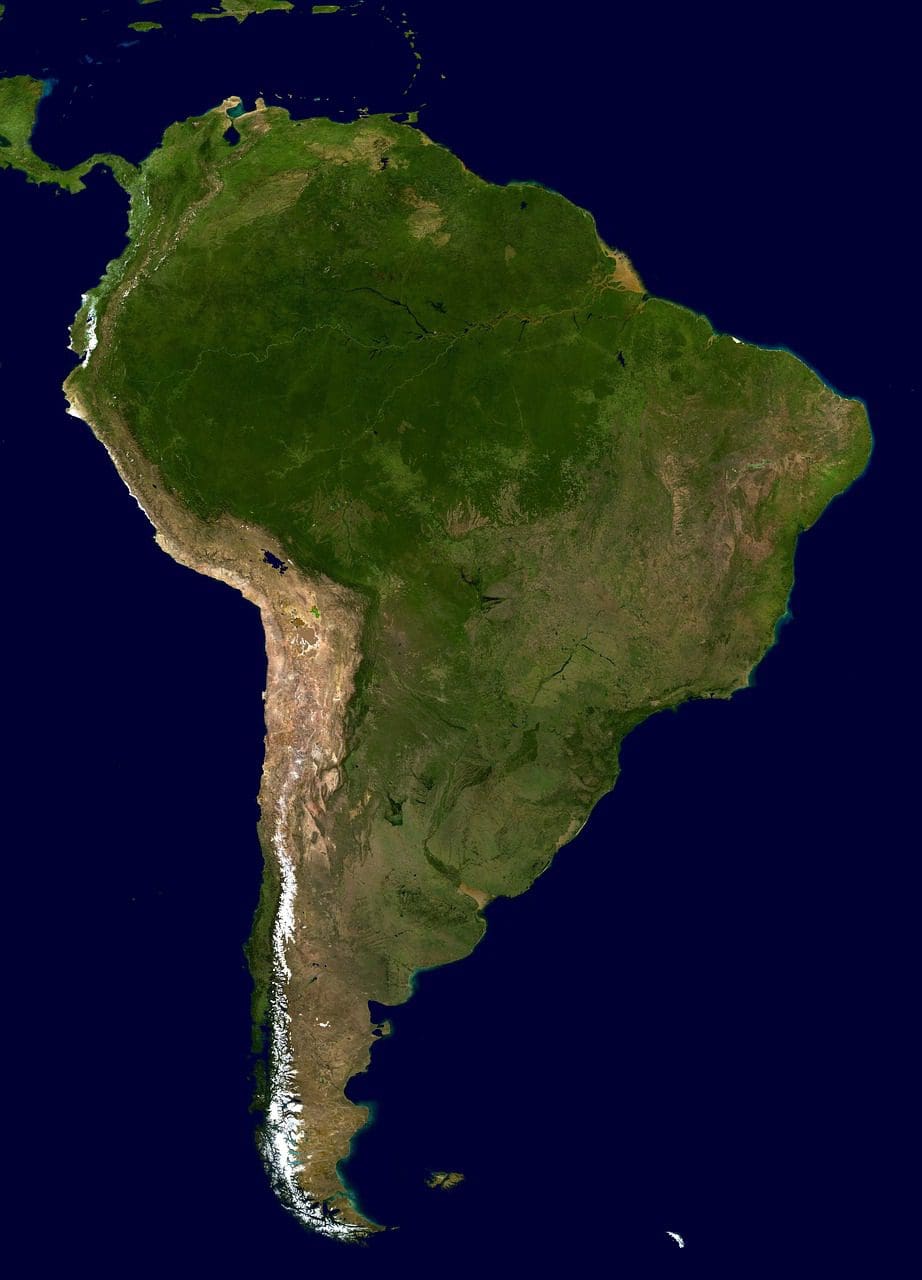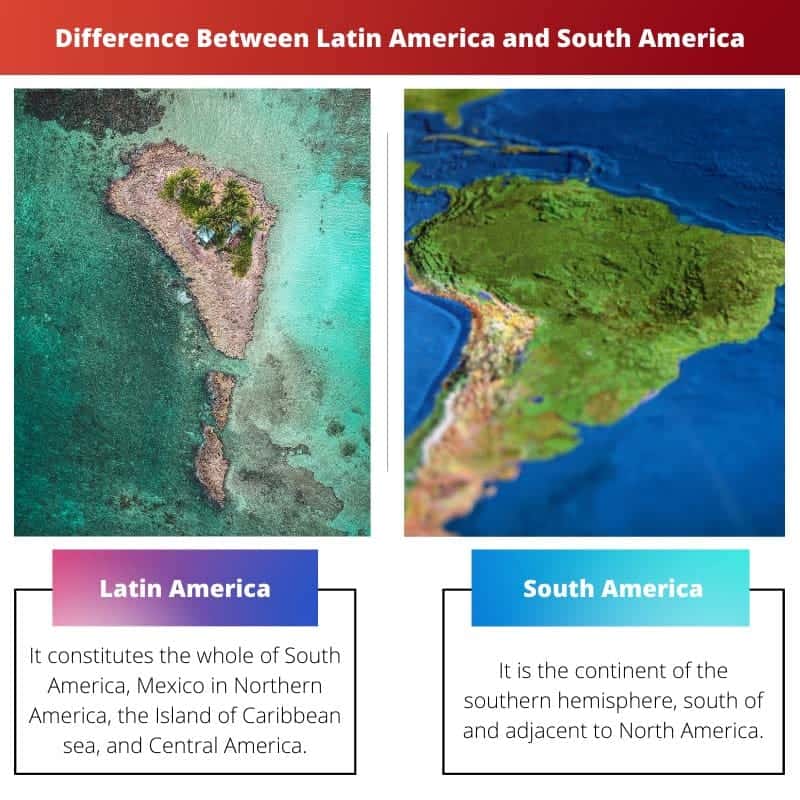In 1492, when Christopher Columbus reached Terrafirma in the Caribbean, he thought he had found a shortcut to Asia.
But after 10 years, Amerigo Vespucci denoted the land as the ‘New World.’ As a result, this western hemisphere was named “America” in Vespucci’s honor.
In the present time, people still have trouble sorting out their America when it comes to the term South America and Latin America.
Key Takeaways
- Latin America refers to the region of the Americas where Romance languages (Spanish, Portuguese, and French) are primarily spoken, including countries in South America, Central America, and Mexico; South America refers specifically to the continent located in the western hemisphere south of the equator.
- Latin America includes Mexico, Brazil, Argentina, and Chile; South America includes Brazil, Argentina, Colombia, and Venezuela.
- Latin America is defined by language and culture, while South America is a geographic designation.
Latin America vs. South America
Latin America is a country where most of the people speak Spanish and Portuguese. It has a huge population. Its division is done based on language and culture. South America is one of the largest continents. Its population is less as compared to Latin America. Its division is done based on geographical area.

Latin America includes countries whose heritage is predominantly Spanish, Portuguese, or French. It consists of Mexico, the island of the Caribbean, Central America, and the entire continent of South America.
It is all the countries in America that speak Latin languages: french, Spanish, and Portuguese.
South America is a continent in the southern hemisphere and towards the western hemisphere, with a small portion of the northern hemisphere. Sometimes it is also referred to as the southern subcontinent of America.
It is a piece of land that goes from Chile to Venezuela.
Comparison Table
| Parameter of Comparison | Latin America | South America |
|---|---|---|
| Division | It is a linguistic or cultural division of the continent. | It is the geographical division of the continent. |
| Geography | It constitutes the whole of South America, Mexico in Northern America, the Island of Caribbean sea, and Central America. | It is the continent of the southern hemisphere, south of and adjacent to North America. |
| Population | Latin America has a larger population. | South America has a comparatively lesser population. |
| Economy | Latin America is greatly indulged in exports. | South America is indulged in Minning, Agriculture, and Foresting. |
| Language | In Latin America, French, Spanish, and Portuguese are spoken. | In South America, Dutch, English, Spanish, etc are spoken. |
What is Latin America?
Latin America is sometimes considered a geographical region that includes the entire Caribbean, all western hemisphere countries south of the united states.
Some people define Latin America as a country with a history of Iberian Colonialism, such as Spanish and Portuguese. Others define Latin America as a region of predominant romantic languages such as Spanish, Portuguese, or French.
Simply put, Latin America is a country where Spanish or Portuguese is currently the dominant language.
Latin America had been settled for millions of years by a wide range of indigenous groups before the arrival of Christopher Columbus in 1492. Some indigenous groups, such as Aztecs, Mayans, and Incas, boasted advanced civilization.
The first Europeans arriving in America were Spanish, soon followed by Portuguese. They colonized Brazil. They conquested Central America, South America, and Mexico.
Most of Latin America gained independence from the Portuguese in 1825; between 1810 and 1825, another section of Latin America gained independence from Spain. In 1898, Cuba, one of the two remaining colonies of Spain, gained independence.
North America, South America, Central America, and the Caribbean constitute Latin America, with Mexico in North America being the Largest and the only country in Latin America.

What is South America?
South America is one of the seven continents, the fourth largest continent in the world. In the Western Hemisphere, simply as America, it s the Southern portion of Earth’s landmass, referred to as the New World.
Geographically speaking, South America is Roughly triangular in shape and compact, tapering to a point in Chile in the south and broad in the north towards Central America.
In the Northwest, South America has joined North America by a land bridge(Isthmus of Panama) narrowing to about 80km. It is separated from Antarctica in the south by the Drake Passage.
The Pacific Ocean bounds it to the west, The Caribbean Sea to the north, and the Atlantic Ocean to the northwest.
Three different development stages summarize the history of South America. Each of these stages corresponds to a major division of geology time.
Precambrian time, the first stage, was traced back around 4.46 billion to 540 million years ago. The second stage, a Paleozoic era that witnessed the formation of the first supercontinent Gondwana was about 541 to 252 million years ago.
And lastly, the Mesozoic and Cenozoic eras, in which the present continental structure emerged, were about 252 million years ago.

Main Differences Between Latin America and South America
- Latin America is a linguistic or cultural division of the continent. On the other hand, South America is the geographical division of the continent.
- Latin America constitutes the whole of South America, Mexico in Northern America, the Island of the Caribbean Sea, and Central America. , South America is the continent of the southern hemisphere, south of and adjacent to North America.
- Latin America has a larger population. It has a population of about 656,039,296 as of November 2020. On the other hand, South America has a comparatively lesser population. It has a current population of about 42.24 crores, making it the fifth most populated continent in the world.
- Latin America greatly indulges in exports, with a GDP of about 5.3 trillion USD. Against, South America is indulged in Minning, Agriculture, and Foresting. It has a GDP of about 3.990 Trillion USD.
- In Latin America, French, Spanish, and Portuguese are spoken. In South America, Dutch, English, Spanish, etc are spoken.
- The territorial extent of Latin America is about 19,197,000 km2, and the territorial extent of South America is about 17,840,000 square kilometers making it the fourth largest continent in the world.

- https://books.google.com/books?hl=en&lr=&id=mf0eAAAAQBAJ&oi=fnd&pg=PR2&dq=latin+america+and+south+america&ots=3xCqcWt0lE&sig=YqMHeYDe4Tr0YSgfDLFhezYhR_M
- https://www.sciencedirect.com/science/article/pii/S0048733398000778
- https://pdfs.semanticscholar.org/e625/bf771ba5c3936aca9ab330d260786f862dbf.pdf
- https://link.springer.com/chapter/10.1007/978-1-935704-10-2_5
This is a fascinating article with a lot of useful and interesting information. I never knew about the distinction between South America and Latin America. Thanks for sharing!
I have to agree, it’s amazing to learn about the history and geography of these continents.
Absolutely! The article was very informative and well-written.
Thanks for sharing this information. The history and distinctions between Latin America and South America are quite intriguing.
I couldn’t agree more. The article was fascinating to read.
I am really impressed by the depth of information in this article. It’s clear and concise, providing a great overview.
I think this article provides an insightful look into the historical and cultural aspects of these continents.
Couldn’t agree more. The information presented here is quite valuable.
This article was a great read. I appreciate the detailed insights provided about Latin America and South America.
Agreed, the historical and geographical distinctions were explained incredibly well.
Absolutely, this article is a valuable resource for understanding the differences between Latin America and South America.
The historical context of Latin America and South America is quite fascinating to learn. It’s a well-researched article.
Absolutely, I appreciate the effort that was put into providing detailed information on the topic.
I found this article quite enlightening. The detailed comparison between Latin America and South America was very useful.
I appreciate the depth of information provided in this article.
Yes, the geographical and cultural differences between the two regions were explained very clearly.
This was an excellent article, giving a clear understanding of the distinctions and shared aspects of these two regions.
Agreed, I believe this article presents the information in a very comprehensive manner.
I thoroughly enjoyed reading this article. It was an intellectual treat to learn about Latin America and South America.
Absolutely, I think this article does a fantastic job in presenting the information with clarity.
This article was very enlightening. The differences and similarities between Latin America and South America were detailed well.
I think this article provides a great understanding of the historical context of these continents.
Definitely, I learned a lot from the comparison tables included in the article.
The history of Latin America and South America was presented in a very engaging manner. A great read!
Absolutely, I think the comparison table was extremely helpful in understanding the differences and similarities.